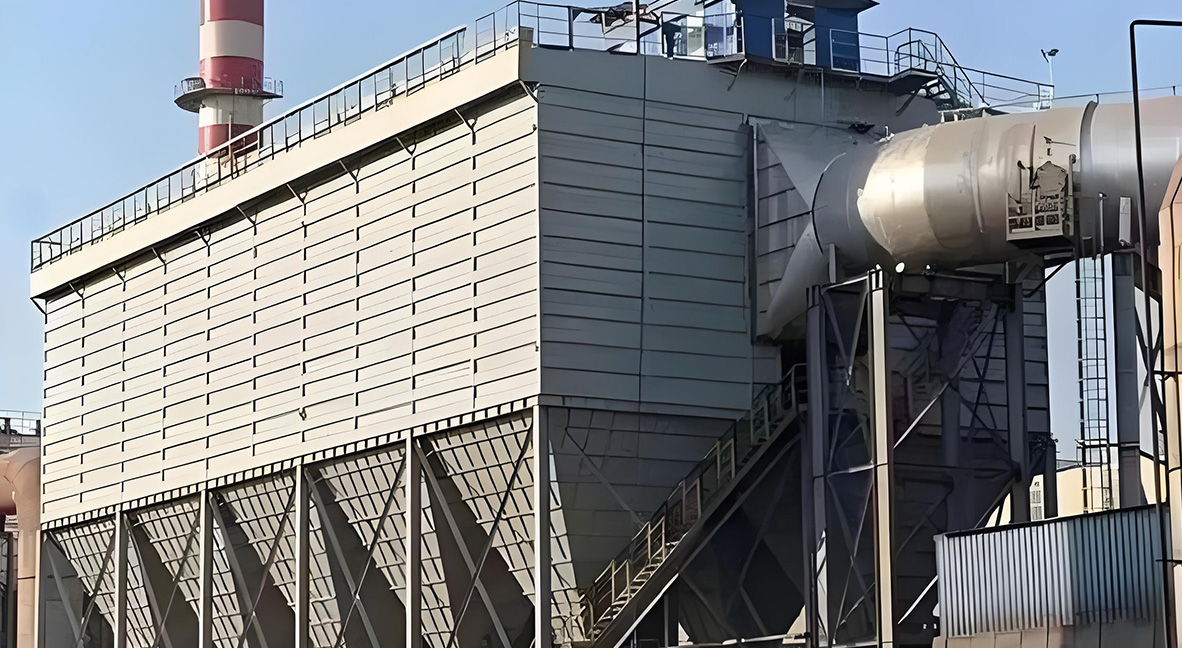
Pulse Jet Bag Filter: The Ultimate Guide to Efficient Dust Collection
What is a Pulse Jet Bag Filter?
A pulse jet bag filter (also called a pulse jet baghouse) is an advanced industrial dust collector designed to remove fine particulate matter from exhaust gases. These systems are widely used in industries such as cement, power generation, steel manufacturing, pharmaceuticals, and food processing due to their high filtration efficiency (up to 99.9%) and low operational costs.
Unlike traditional dust collectors, pulse jet bag filters use high-pressure compressed air pulses to clean filter bags automatically, ensuring continuous operation with minimal downtime.
🔹 Key Features:
- High dust removal efficiency (even for sub-micron particles)
- Automated self-cleaning mechanism (reducing maintenance)
- Compact and modular design (saves space)
- Energy-efficient operation (lower pressure drop than reverse-air systems)
How Does a Pulse Jet Baghouse Work?
The pulse jet bag filter operates in a continuous filtration-cleaning cycle, ensuring optimal dust collection without interrupting airflow. Here’s a step-by-step breakdown:
1. Dust-Laden Air Enters the Baghouse
- Contaminated air flows into the dust collector chamber, where it passes through fabric filter bags.
- Larger particles may settle in the hopper, while finer dust is captured on the filter media.
2. Filtration Process
- As air moves through the filter bags, dust accumulates on the surface, forming a dust cake.
- The dust cake enhances filtration efficiency by trapping finer particles.
3. Pulse Jet Cleaning Mechanism
- When the pressure drop across the filter reaches a set limit (typically 1500–2500 Pa), the cleaning cycle activates.
- Solenoid valves release short, high-pressure air pulses (0.1–0.2 sec bursts at 4–7 bar) into the bags.
- The shockwave travels down the bag, flexing the fabric and dislodging the dust layer.
- The dislodged dust falls into the collection hopper for disposal.
4. Continuous Operation
- The system alternates cleaning between compartments, allowing uninterrupted airflow.
- PLC controls optimize cleaning frequency based on pressure drop or time intervals.
📌 Why Choose a Pulse Jet Over Other Dust Collectors?
✔ Higher efficiency than mechanical shakers or reverse-air baghouses.
✔ Lower energy consumption due to shorter cleaning cycles.
✔ Longer filter life (2–5 years) with proper maintenance.
What is the Working Principle of a Pulse Jet Bag Filter?
The core principle of a pulse jet bag filter is surface filtration + on-demand cleaning. Here’s how it works:
1. Surface Filtration Mechanism
2. Reverse-Pulse Cleaning
- Dust particles are captured on the outer surface of the filter bags.
- Over time, a porous dust layer forms, improving filtration efficiency.
- Compressed air is blasted downward through a venturi nozzle, creating a reverse flow.
- This shockwave dislodges dust without stopping airflow.
3. Key Components of a Pulse Jet Baghouse
| Component | Function |
|---|---|
| Filter Bags | Made of polyester, PTFE, or Nomex for high-temperature resistance. |
| Cage (Support Frame) | Prevents bag collapse and ensures even dust distribution. |
| Pulse Jet Valves | Controls compressed air bursts for cleaning. |
| Dust Hopper | Collects dislodged dust for removal. |
| PLC Control Panel | Automates cleaning cycles for optimal performance. |
Top 5 Benefits of Using a Pulse Jet Bag Filter
✅ 1. Superior Dust Removal Efficiency (99.9%) – Captures fine particles as small as 1 micron.
✅ 2. Energy Savings – Lower pressure drop than reverse-air systems, reducing fan power consumption.
✅ 3. Minimal Maintenance – Self-cleaning mechanism reduces manual intervention.
✅ 4. Long Filter Life – Proper pulse cleaning prevents premature bag wear.
✅ 5. Compliance with Environmental Regulations – Meets EPA, OSHA, and ISO standards for industrial emissions.
Common Applications of Pulse Jet Bag Filters
🏭 Cement Industry – Kiln exhaust, clinker cooler dust.
⚡ Power Plants – Coal-fired boiler fly ash collection.
🏗️ Steel & Metal Processing – Blast furnace gas cleaning.
🧪 Chemical & Pharmaceutical – Powder handling, reactor venting.
🍞 Food & Grain Processing – Flour, sugar, and spice dust control.
Pulse Jet vs. Reverse Air Baghouse: Which is Better?
| Feature | Pulse Jet Bag Filter | Reverse Air Baghouse |
|---|---|---|
| Cleaning Method | High-pressure air pulses | Low-pressure reverse airflow |
| Energy Use | Lower (shorter bursts) | Higher (continuous flow) |
| Filtration Efficiency | 99.9%+ | 99.5% |
| Maintenance | Less frequent | More frequent |
| Space Requirement | Compact | Larger footprint |
💡 Best Choice? Pulse jet bag filters are ideal for high-efficiency, low-maintenance dust control, while reverse-air systems are better for low-pressure, large-volume applications.
How to Maintain a Pulse Jet Bag Filter for Maximum Efficiency?
🔧 1. Regular Inspection – Check for bag tears, seal leaks, and nozzle blockages.
💨 2. Optimize Pulse Pressure – Adjust air pressure to avoid over-cleaning (wears bags) or under-cleaning (clogs filters).
📉 3. Monitor Pressure Drop – A sudden increase indicates clogged filters; a decrease suggests bag damage.
🧹 4. Scheduled Hopper Cleaning – Prevents dust buildup that can cause bridging or re-entrainment.
🔄 5. Replace Worn-Out Bags – Typical lifespan: 2–5 years, depending on dust type.
FAQs
Q1: How often should a pulse jet bag filter be cleaned?
Q2: What materials are used for filter bags?
Q3: Can pulse jet filters handle explosive dust?
Q4: What’s the typical pressure drop in a pulse jet baghouse?
Q5: How do I choose the right pulse jet bag filter size?
Conclusion: Why Pulse Jet Bag Filters Are the Best for Dust Control
Pulse jet bag filters offer unmatched efficiency, low maintenance, and energy savings, making them the top choice for industrial dust collection. Whether you’re in cement, power, or food processing, investing in a high-quality pulse jet system ensures compliance with environmental regulations and long-term cost savings.
📢 Need a Custom Solution? Contact us today for expert advice on selecting the best pulse jet bag filter for your industry!


